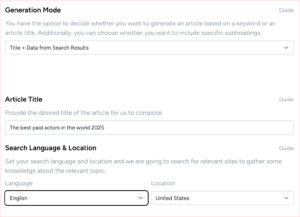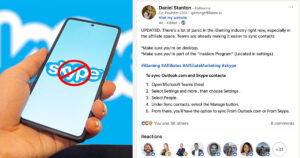Blogs can be a useful tool for your business. An important point to keep in mind when you’re publishing your blog posts is that you’re writing not only for a living, breathing audience, but also for those elusive, constantly evolving, algorithm-spewing entities that are search engines. Striking a balance between human and machine may seem improbable, but one thing you can be sure of is the first thing your audience (whether human or robot) will see when they come across your blog post, and that’s your title – both meta title as well as the main title of your blog post. Crafting great blog titles can ultimately affect your conversion rates, so here are some guidelines for making them more effective.
1. Character count
There are dozens of content marketing statistics to keep abreast of, but one of the most important to keep in mind is length of your meta title. The length of the title deserves some careful consideration: too long, and you risk most of it being cut off in search engine results and social media posts; too short, and you risk leaving out essential information that may be crucial to the reader. Once again, the ideal length for great blog titles would be somewhere in the middle: Moz recommends between 50 and 60 characters for optimum Google visibility. Run your title through this tool to see what your blog headline will look like. Make sure to make your title catchy, so that an internet user will want to click it and read more.
2. Use keywords wisely
Utilising thorough keyword research and a solid keyword strategy is as important in your headlines as it is within your body text. When it comes to formatting your blog titles, common sense dictates that your focus keyword should be placed towards the beginning of your title, as this will be the first thing potential visitors will see. Depending on your niche, you can choose to include long-tail keywords for more specific searches, and add subordinate keywords in your meta-description for a double whammy of SEO.
3. Know what’s trending

-
Blog titles that start with a number
There’s something about itemised articles (fun fact: referred to as listicles). There are several cool advantages to these types of blog titles: (1) they’re eye-catching; (2) they tell the reader exactly how many new things they will learn; and (3) they give information about how long the article will be. For instance check out these examples from our own blog below:
8 Must-Attend Content Marketing SEO Tradefairs (read)
5 Tips for Better Product Descriptions (read)
5 Signs your Site Needs an SEO Overhaul in 2019 (read)
Read more from our blog post about how to write a listicle.
-
“How to …” and guide blog titles (like this one!)
Whether it was “How to bake the perfect loaf of bread” or “How to stay sane during lockdown”, chances are this is how you searched for your latest query on your search engine of choice. “How to…” and guide titles typically get a lot of clicks because they lead the reader to believe that they will learn something. Here are a few examples of great blog titles of this type:
How to Improve Your Conversion Rates Drastically with High Quality Content (read)
The SEO Title Guide for Beginners (read)
How to Reach the Millennials with an Online Presence (read)
-
Questions
People are naturally curious and posting a question as a blog title can be a great way of invoking this natural curiosity. Question titles tend to remain popular as readers will believe they will find the answer they are looking for.
Is SEO Dead in 2019? (read)
Blinkist Review: Can a book really be compressed to 10 minutes? (read)
A word of warning!
Try to avoid blog titles commonly known as clickbait. These titles tend to intentionally ‘dupe’ (for lack of a better term) readers into believing that they will be led to read something that will be of interest and value to them, when in fact they are instead led to sites of dubious quality and/or value. Examples of clickbait titles:
This stay-at-home mum makes $200,000 with a simple trick! Find out how.
Girl meets common old man at supermarket. What she finds out will blow your mind.
4. Avoid generic blog titles
With user intent becoming ever more specific, it’s best to steer clear of generic titles. You need your title to tell the user exactly what to expect from your blog post. Take our title, for instance. Had we simply gone for “Guidelines” would have been confusing. “Guidelines for titles” would have been better, but still rather generic. “Guidelines for better blog titles” is much more specific and informative.
5. Test your blog titles
After reading these guidelines, you should have been able to come up with better blog titles for your blog posts. But what if you have a few, equally good titles for the same post and you want to choose between them? The best way to do this is to run your blog titles through an A/B test. An A/B test allows you to compare two versions of a webpage and determine which would work better through statistical analysis – you can try it for free on the Google Marketing Platform.
Leave blog writing to the experts
Now that your titles are all set, what about the rest of your blog posts? Our Topcontent blog content writing experts can help you deliver compelling articles to your target audience, whoever and wherever they may be.
Contact us today and get high-quality content for your blog!





